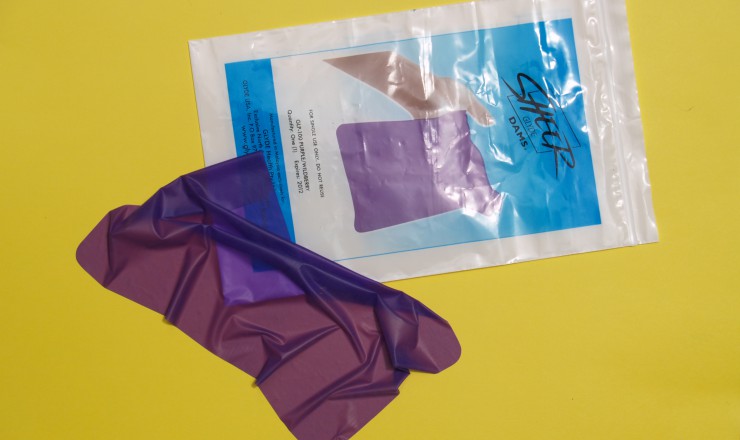Birth Control: Finding the Best Fit
Here are some answers to basic questions that will help you choose, find and use a method of birth control that will fit you and your needs.
How well does it need to work?
- In general, the most effective way to prevent a pregnancy is to use hormonal methods. Hormonal methods of birth control such as the pill, patch, ring, hormonal IUD and injection are 99% effective.
- Non-hormonal birth control can be slightly less effective. Depending on the method, non-hormonal birth control can be between 78% and 98% effective.
- Remember, birth control is only as effective as your ability to use it consistently and correctly. For instance, the pill is 99% effective if used correctly, but if you can’t take it at the same time every day it may end up being less effective in real life.
- For more information about how effective different birth control options are, check the page in this section for each method.
| Useful Tip |
| Your birth control method will not work if you don’t use it according to the instructions. For example, if you are taking the pill you must take it at the same time every day. If you are using vaginal contraceptive film (VCF), you have to remember to insert it when you have vaginal* sex. |
How often do you have vaginal sex?
Never
If you are not having vaginal sex at all then you don’t need to worry about birth control. If you are having other types of sex you still need to think about protecting yourself from STIs.
Sometimes
If you have vaginal sex only every once in a while, you could choose a method that you use only when you need it.
- Some one time only options are condoms, withdrawal, sponges and vaginal contraceptive film (VCF). They are used only just before or during vaginal sex.
- The advantages of these methods are that they are usually not expensive and you use them only when you need them.
- The down side to these methods is that you may get carried away in the moment and forget to use them or decide to take a chance and not use birth control.
Often
If you are having vaginal sex quite often, you could choose a method that you don’t have to think about when you are in the middle of a passionate encounter.
- The pill, the patch, the ring, the injection and IUDs are used on an ongoing basis.
Do you also want to prevent sexually transmitted infections (STIs)?
- The only birth control methods that can also protect against the spread of STIs are female (internal) and male (external) condoms.
Are you comfortable using hormones?
- The pill, the patch, the ring, the injection, the hormonal IUD and emergency contraceptive pills are hormonal methods of birth control.
- Hormonal birth control methods are safe for most people but they do have some risks, especially as you get older. (For more on these risks, check out the section for each method.)
| Useful Tip |
| One of the down sides of hormonal methods is that they won’t protect you from a sexually transmitted infection (STI). If you think you or your partner may have an STI, you will need to protect yourself. For information on how to prevent and protect against STIs, check out Protecting Yourself and Your Partner(s) from STIs. |
How much are you able to pay?
Your budget may be a big factor in the type of birth control you choose. How much money you have, how often you need to use a method, and whether you have a drug plan that covers the cost of prescriptions can all affect your choice.
- Some methods, like IUDs, may be pricey up front, but can work out to be cheaper over time.
- Spermicides can also cost a lot of money, but if you only use them once in a while, they may be the cheapest and most effective option.
- For more information about the cost of different forms of birth control check the page for each method.
| Useful Tip |
| If you are low on funds, sexual health clinics and clinics like Planned Parenthood Toronto’s Health Services sell many methods at a reduced cost or even give them out for free. Some clinics, schools and community centres also provide free condoms. For more information on how and where to get birth control, check out Accessing Birth Control on Your Own Terms. |
Are you able to go to a clinic?
In order to get some types of birth control you will need to see a health care provider for a physical exam and a prescription.
- The pill, the patch, the ring, the injection and the hormonal IUD, the copper IUD and diaphragm need an exam by a doctor and a prescription. (Only the IUD and the diaphragm need an internal pelvic exam.)
| Useful Tip |
| Planned Parenthood Toronto’s Health Services offers TTC tokens to clients who need help with getting to and from the clinic. Just ask at the front desk! |
Are you okay with having an internal exam by a health care provider?
- Diaphragms will need to be fitted by a health care provider who will also do a pelvic exam.
- IUDs also need a pelvic exam and must be inserted by a health care provider.
- Some health care providers may ask you to have a Pap test before they will prescribe hormonal birth control.
Are you comfortable putting your fingers and other things into your vagina?
- Birth control methods such as the ring, vaginal contraceptive film (VCF), the sponge, the female (internal) condom and the diaphragm must be inserted into your vagina.
- The IUD will be inserted by your health care provider. You may be asked to check your cervix (the entrance to the uterus at the top of your vagina) every month to feel for IUD strings.
- You will need to check your vaginal discharge daily if you are using fertility awareness methods (FAM).
Is it okay if your birth control method is noticed by others?
- The birth control patch needs to be worn on your skin. Depending on what you wear and where it is placed, it may or may not be visible.
- Internal (female) condoms can be seen outside your vagina and will be felt by your partner during vaginal sex.
- The ring, the diaphragm, the sponge, and the strings from an IUD may be felt by your partner’s penis or hands, although they won’t hurt or interfere with their pleasure.
Will you need space to store your birth control device?
- Condoms, spare pill packs, patches, rings, diaphragms, VCF, sponges, and charts used for FAM need to be stored somewhere. This might pose a problem if you want to keep your birth control method private from others.
| Useful Tip |
| Some birth control methods need to be stored in a particular way for them to work the best. For example, condoms should not be stored in your back pocket or wallet. Always read the instructions that come with your birth control method to learn more. |
Are you okay with a birth control method that might change your periods?
- Some progestin-only methods like the progestin-only pill, hormonal IUD, and the injection may make your periods come at odd times or even stop altogether. This will not hurt you, but some people are uncomfortable with the idea.
| Useful Tip |
| The pill, patch, and ring will make your periods come at the same time every 28 days. They may also cause you to have a lighter flow and fewer cramps. You can also use these methods to control when and how often you get a period, including skipping a period. This is called “stacking” or “back-to-backing.” Consult with your health care provider for more information before you attempt to “stack” your birth control. |
If you have questions about this topic, feel free to contact one of our peer educators. [Link]
*We know that these aren’t the words everyone uses for their bodies (eg. trans folks), and support you using the language that feels best for you.
Last Edited: May 2020






